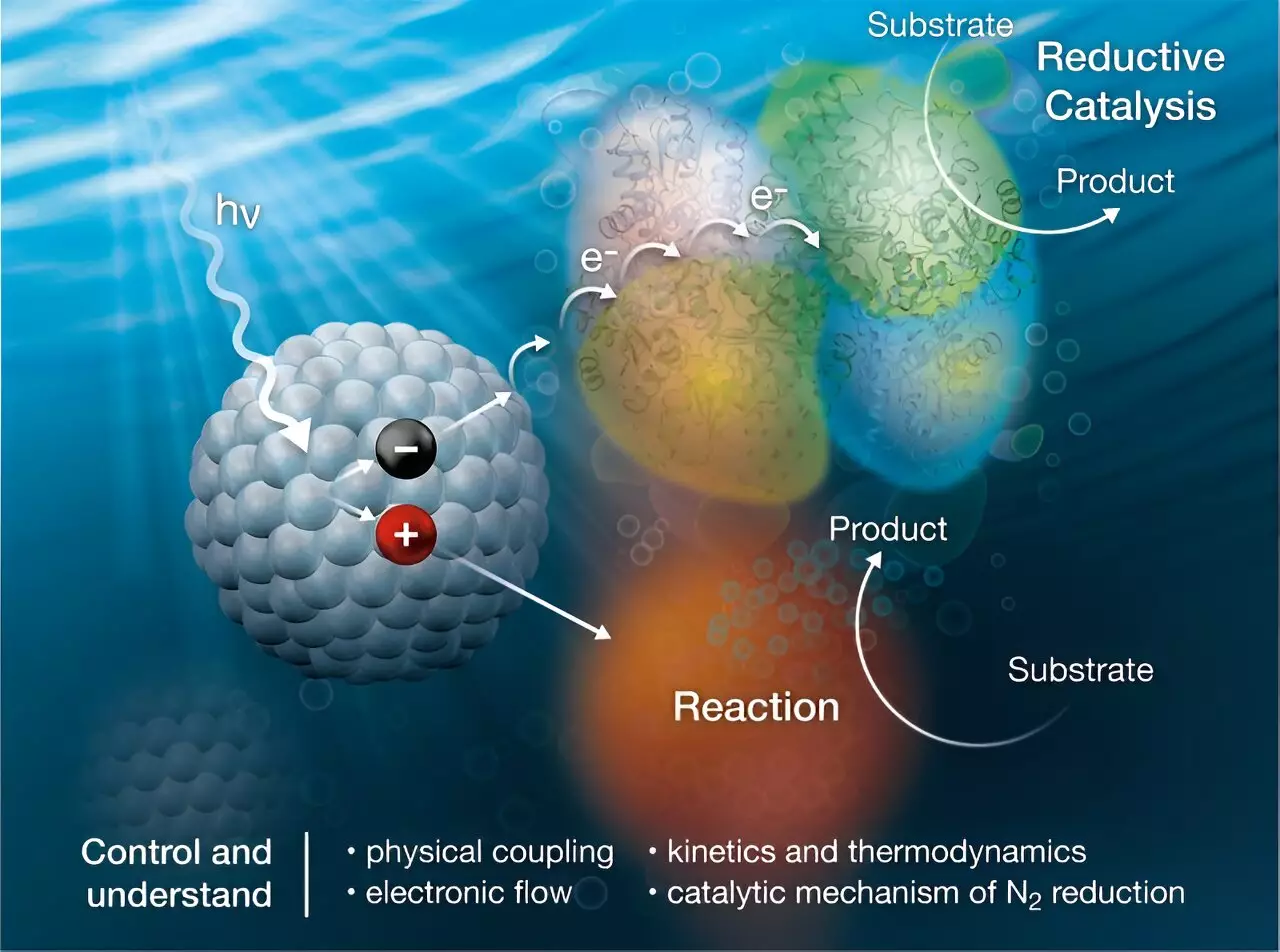The traditional method of producing ammonia for agriculture involves converting dinitrogen gas (N2) into ammonia (NH3) using the energy-intensive Haber-Bosch process. This process not only consumes 2% of the global energy but also generates significant greenhouse gases, contributing to environmental concerns. However, a promising alternative approach using sunlight to drive the ammonia production process is currently under development. This article will explore the innovative research published in the Journal of the American Chemical Society, where scientists have created a unique biohybrid system that combines nanocrystals with the nitrogenase enzyme to catalyze ammonia production using sunlight energy.
The key to replacing ATP with sunlight energy lies in the development of a biohybrid system that can efficiently transfer charge from nanocrystals to the nitrogenase enzyme, enabling the conversion of N2 to NH3. By utilizing nanocrystals to harness sunlight energy, researchers have made significant progress in understanding the intricate process of ammonia production. This approach not only offers a low-energy solution but also eliminates the production of greenhouse gases associated with traditional methods.
One of the primary advantages of the sunlight-driven process is its sustainability and reduced environmental impact. Unlike the Haber-Bosch process, which produces large amounts of carbon dioxide (CO2) as a byproduct, the new biohybrid system catalyzes NH3 production without generating CO2. This breakthrough paves the way for producing NH3 fertilizers locally, minimizing CO2 emissions from shipping to farms and promoting sustainable agricultural practices.
Central to the success of the biohybrid system is the coupling of nanocrystals with the nitrogenase enzyme, specifically the Mo-nitrogenase enzyme with its FeMo-cofactor. This unique metal cluster requires a precise interaction with the nanocrystals to facilitate the reduction of N2 to NH3. By studying the properties of nanocrystals for binding to the enzyme, researchers have gained valuable insights into directing photogenerated electrons to the FeMo-cofactor and understanding the mechanism of the reaction.
Moving forward, further research is needed to optimize the nanocrystals’ binding properties to enhance the efficiency of the biohybrid system. By synthetically tuning nanocrystals to selectively transfer charge to enzymes, researchers can improve the overall performance of the sunlight-driven process. Moreover, advanced spectroscopy techniques can be employed to analyze reaction intermediates and develop a comprehensive kinetic model of the N2 reduction reaction, paving the way for commercial applications of this sustainable technology.
The potential of harnessing sunlight energy for ammonia production represents a significant advancement towards sustainable agriculture. By combining nanocrystals with enzymes in a biohybrid system, researchers are exploring new avenues for reducing the environmental impact of fertilizer production and promoting agricultural sustainability. As this innovative technology continues to evolve, it holds the promise of revolutionizing the way ammonia is produced, contributing to a greener and more sustainable agricultural future.


Leave a Reply